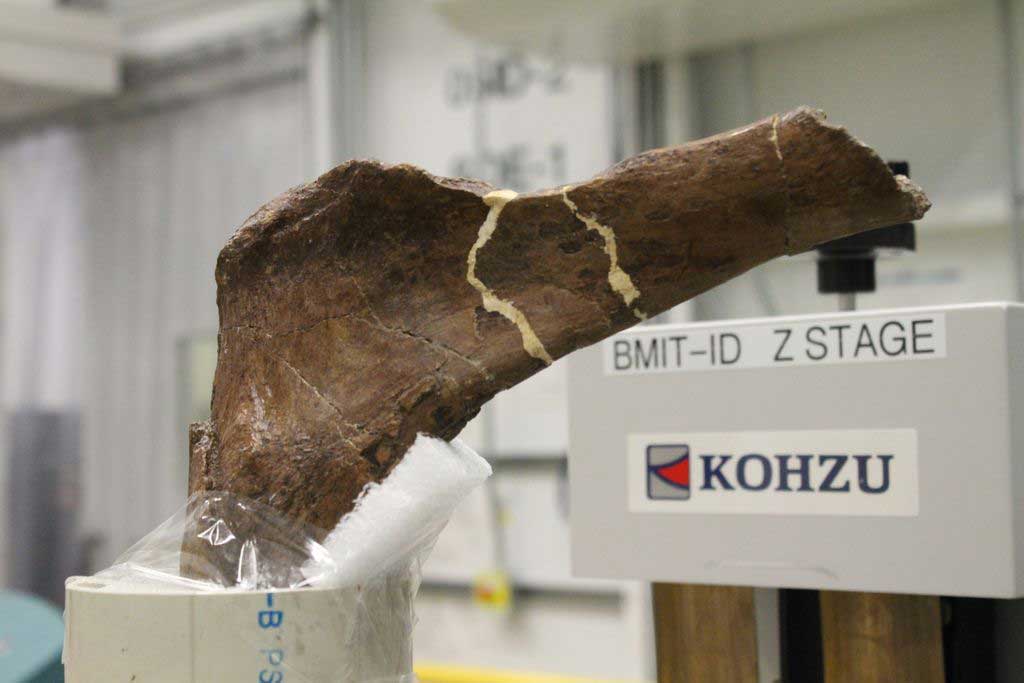Studying the world’s largest T. rex to learn about evolution
Saskatchewan researchers may have uncovered unprecedented details in dinosaur fossils.
By Victoria SchrammScotty, the world’s largest T. rex, at the Royal Saskatchewan Museum.
Scotty, the world’s largest T. rex, has captured the public’s attention since it was discovered in Saskatchewan in 1991. Now, researchers from the University of Regina (UofR) and the Royal Saskatchewan Museum (RSM) are taking a closer look at the dinosaur’s remains using the Canadian Light Source (CLS) at the University of Saskatchewan.
The scientists are using synchrotron light, which is millions of times brighter than the sun, at the CLS to non-destructively analyze Scotty’s rib bones on a molecular level. The study is in its early stages, but the team may have identified something remarkable.
“We have found what seems to be a network of blood vessels in the 67 million-year-old fossils,” said Dr. Mauricio Barbi, a Professor with the Department of Physics at the UofR.

Barbi emphasized that it is too early to state any findings from the ongoing research project. “We are at the CLS to collect data so that we can try to verify what these structures really are,” he added.
If confirmed, the discovery will be a world first. “Such a network of blood vessels has never been observed before in a T. rex fossil,” said Barbi.
The team is using multiple beamline laboratories at the CLS to analyze different characteristics in their samples.
“The synchrotron is particularly helpful for paleontology research,” said Ryan McKellar, the RSM’s Curator of Palaeontology. “We can create these three-dimensional models of fossils in glorious detail and overlay chemical data to bring all of these pictures together in one place.”
The group is in the process of reviewing the data they collected from their experiments at the CLS.
“We have what appears to be a very vast vascular structure in multiple areas inside of our sections of a rib bone from Scotty,” said Jerit Mitchell, an MSc candidate with the UofR’s Department of Physics. “We're very interested to see where this will take us.”
By examining fine details in the anatomy of the ancient dinosaur, the team could provide new insights into evolution and details from Scotty’s life.
“These analyses might give us a better comprehension about Scotty’s habits and how the animal lived and how fast it had to grow to face dangers,” said Barbi, who has been fascinated with dinosaurs since childhood.
“I always loved prehistoric animals and to learn about the evolution of our planet,” he stated. “For me, it's a connection with our past, you can understand our present, and project our future.”
Photos: Synchrotron | Barbi, McKellar, and Mitchell at the CLS
Media Relations:
Victoria Schramm
Communications Coordinator
Canadian Light Source
306-657-3516
victoria.schramm@lightsource.ca
